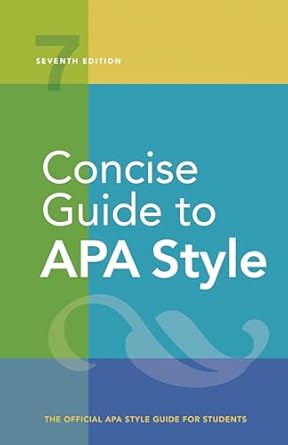[toc]
mastering paraphrasing apa style guide insights
Concise Guide to APA Style: 7th Edition (OFFICIAL)
Page 215 Review
The Art of Paraphrasing: A Deep Dive into APA Style
In academic and professional writing, mastering the art of paraphrasing is crucial.
It allows you to integrate information from various sources seamlessly while maintaining your own voice and demonstrating a thorough understanding of the material.
This essay will explore the principles of paraphrasing, as outlined in the APA Style guide, using excerpts from the provided text.
Why Paraphrase?
The core principle behind paraphrasing lies in its ability to synthesize information efficiently.
As the text states, “Paraphrasing is an effective writing strategy because it allows authors to summarize and synthesize information from one or more sources, focus on significant information, and compare and contrast relevant details.” This highlights how paraphrasing is not merely about changing a few words; it’s about understanding the source material and re-expressing it in a way that aligns with your argument and writing style.
The Professional Tone
Maintaining a professional tone is essential when paraphrasing.
The text emphasizes, “Use a professional tone when describing a concept, idea, or finding in your own words (see Section 2.7).” This underscores the importance of accuracy and objectivity.
When paraphrasing, avoid injecting personal opinions or biases; instead, focus on conveying the original author’s meaning clearly and concisely.
Citing Your Sources
While paraphrasing allows you to reword information, it doesn’t absolve you of the responsibility to cite your sources.
The guide clearly states, “Cite the work you paraphrase in the text using either the narrative or parenthetical format (see Section 8.11).” Proper citation is fundamental to academic integrity and gives credit to the original author for their ideas.
Failing to cite paraphrased material constitutes plagiarism.
Paraphrasing vs.
Quoting
The text advocates for paraphrasing over direct quotation whenever possible: “Published authors paraphrase their sources most of the time rather than directly quoting them; student authors should emulate this practice by paraphrasing more than directly quoting.” This suggests that paraphrasing demonstrates a deeper level of understanding and allows for a more cohesive integration of information into your own writing.
When to Include Page Numbers
While not always mandatory, including page or paragraph numbers can be helpful, especially in longer works. “Although it is not required to provide a page or paragraph number in the citation for a paraphrase, you may include one in addition to the author and year when it would help interested readers locate the relevant passage within a long or complex work (e.g., a book).” This is particularly useful when referencing specific details within a substantial text, enabling readers to easily verify the information.
Examples in Practice
The text provides examples to illustrate specific points.
For instance, “Webster-Stratton (2016) described a case example of a 4-year-old girl who showed an insecure attachment to her mother; in working with the family dyad, the therapist focused on increasing the mother’s empathy for her child (pp. 152-153).” This demonstrates how to properly cite a specific passage, including the relevant page numbers for easy reference.
Software and Applications
The guide also addresses the proper way to reference software and mobile apps: “Common software and mobile apps are treated in a similar manner; in most cases, it is sufficient to mention the name of the program or app and the version used (if known) in the text, without providing an in-text citation or reference list entry (see Section 10.8).” This simplifies the referencing process for commonly used tools, allowing writers to focus on the core content of their work.
The Power of Belief: An Interesting Aside
The text includes a fascinating observation: “Avid readers of science fiction and fantasy books are more likely than readers of other genres to believe in futuristic scenarios—for example, that it will someday be possible to travel to other galaxies or power a car on solar energy (Black et al., 2018).” While this may seem tangential, it underscores the power of ideas and how exposure to different perspectives can shape our beliefs.
This also highlights the importance of critical thinking when evaluating information from any source.
Tools of the Trade
The document mentions Qualtrics as a survey tool: “We created our survey using Qualtrics (https://www.qualtrics.com).” This illustrates the practical application of research methods and the tools available to researchers.
Conclusion
Mastering paraphrasing is an indispensable skill for effective academic and professional writing.
By understanding the principles outlined in the APA Style guide, writers can seamlessly integrate information from various sources while maintaining their own voice and upholding academic integrity.
Remember to focus on summarizing and synthesizing information, maintaining a professional tone, and properly citing your sources.
Through diligent practice, paraphrasing becomes a powerful tool for communicating complex ideas clearly and persuasively.
Buy full ebook for only $18: https://www.lulu.com/shop/american-psychological-association/concise-guide-to-apa-style-7th-edition-official/ebook/product-rmzpq54.html?page=1&pageSize=4
Mastering Paraphrasing Apa Style Guide Insights
Read more: Table Checklist Review: Enhance Data Presentation

